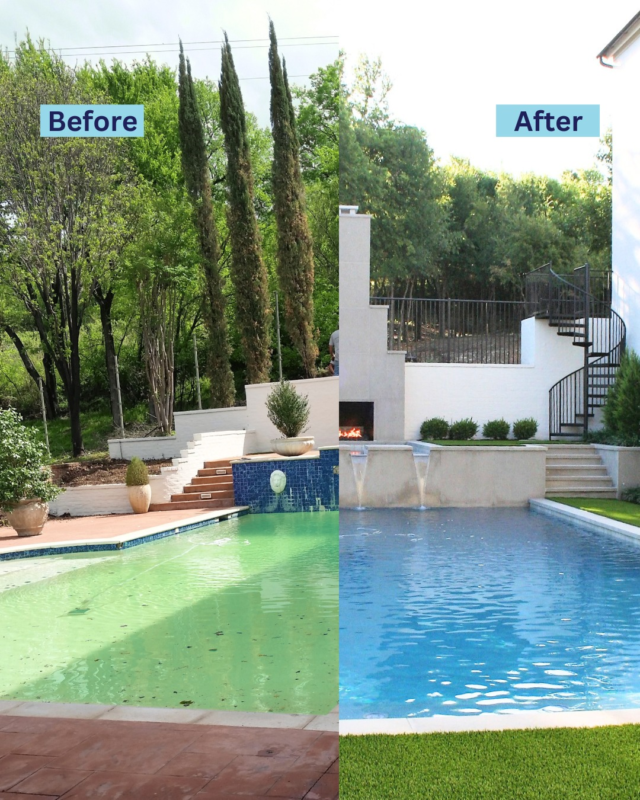Signs That Pool Mastic Needs Replacing
While owning a swimming pool is undoubtedly a great thing to do – providing endless opportunities for fun with friends and family, valuable relaxation time, and exercise to boost your health and fitness – it also comes with a great deal of responsibility.
Regular pool maintenance will generally ensure your pool stays in top condition, but every now and then it might develop potentially serious issues that will result in parts or elements of your pool needing repair or even replacement.
One key thing you need to keep an eye on is your pool mastic – but what exactly is it, why is it so important, and how do you know when you might have a problem with it?
What is pool mastic?
It may not be something you think about much – if ever! – but pool mastic plays a vital role in maintaining the integrity of your inground pool and its immediate surroundings.
Pool mastic is the expansion joint caulking or sealant around swimming pools. Basically, it’s a strong waterproof adhesive that acts as a sealant to prevent the water from your pool from leaking behind its walls. In that regard, it does very much the same job as the caulk that seals your bath or shower where it attaches to the wall.
However, mastic is also highly elastic, which means that it absorbs the pressure when the ground shifts or the concrete in your deck expands and contracts under changing temperatures.
So, having established how important mastic is, how do we know when it’s no longer in good enough condition to do its job effectively?
Signs that your pool mastic needs replacing
Peeling mastic
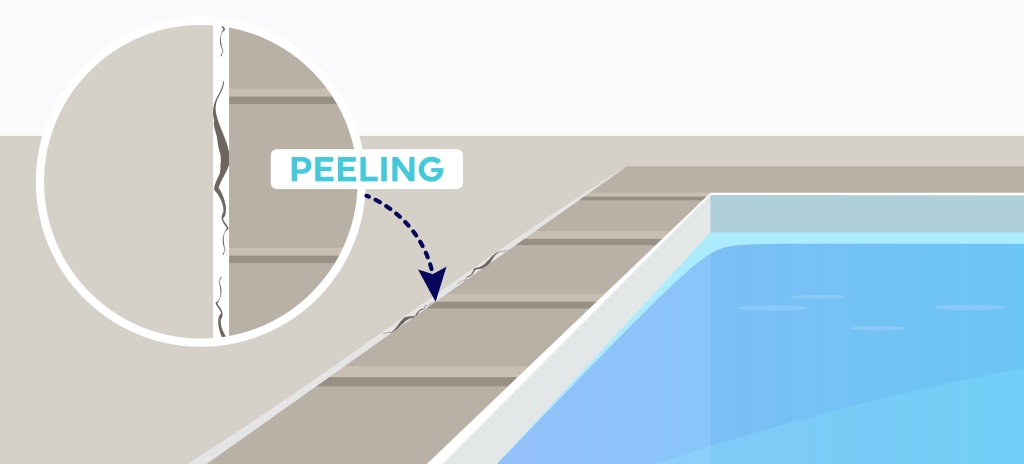
We’ve already mentioned how the role of mastic is similar to that of the caulk in your bathroom, and again much like caulk, as it gets old it can start to peel away or even develop cracks. In either case, when this happens, it’s a clear sign that it’s no longer providing an effective barrier to the water and needs replacing.
Cracks in your pool deck
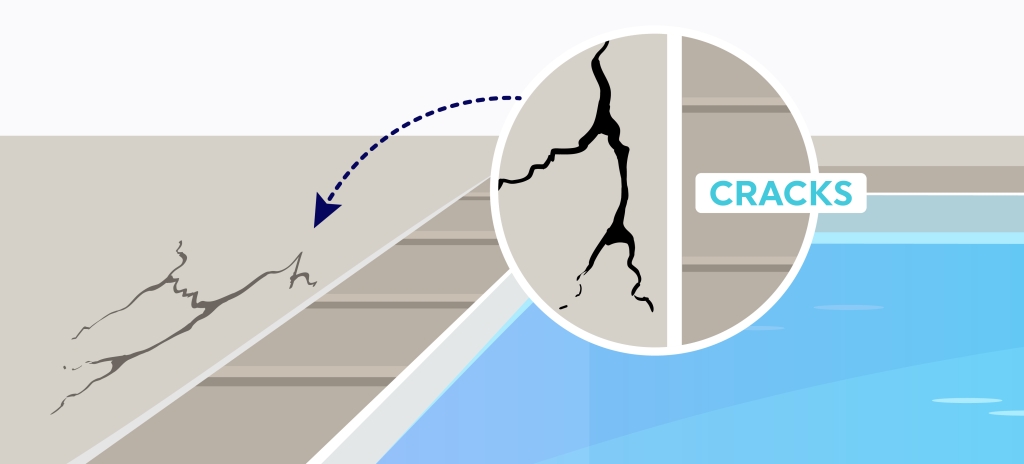
If the mastic isn’t working to take the pressure off your deck, then the result could be that cracks start to develop – and once this happens, it can quickly get worse. So, if you do see small cracks start to appear in your deck, it’s essential that you get the condition of your mastic looked at as soon as you can. Ideally, it’s worth examining the condition of your deck at least once a month so that if you do have a problem, you’ll be aware of it in time to prevent further damage.
Tiles falling off
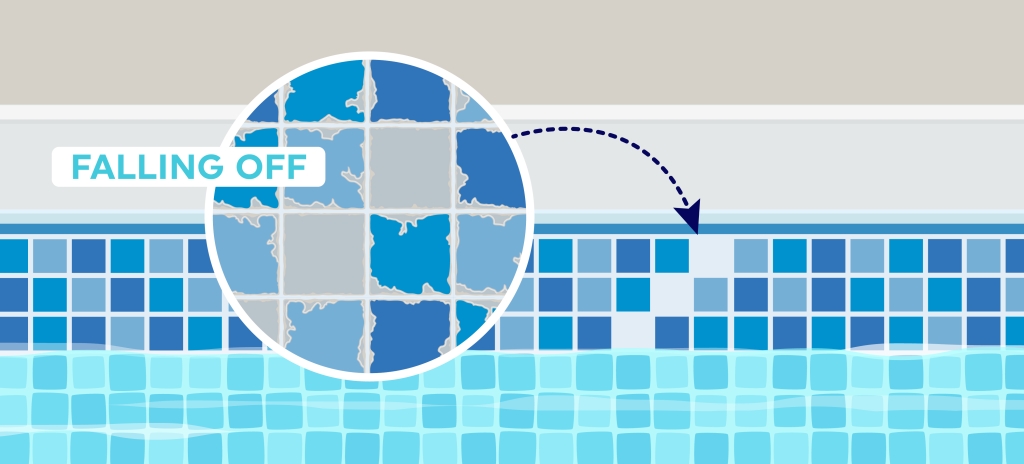
There are a number of reasons why the tiles might start to fall off from your pool – it might just be that the glue holding them to your pool is wearing off, for example – but it could also be down to failing mastic. That’s because if it’s not preventing the concrete from moving around, the shifting surface might cause the tiles to become dislodged.
Separation between the coping and decking
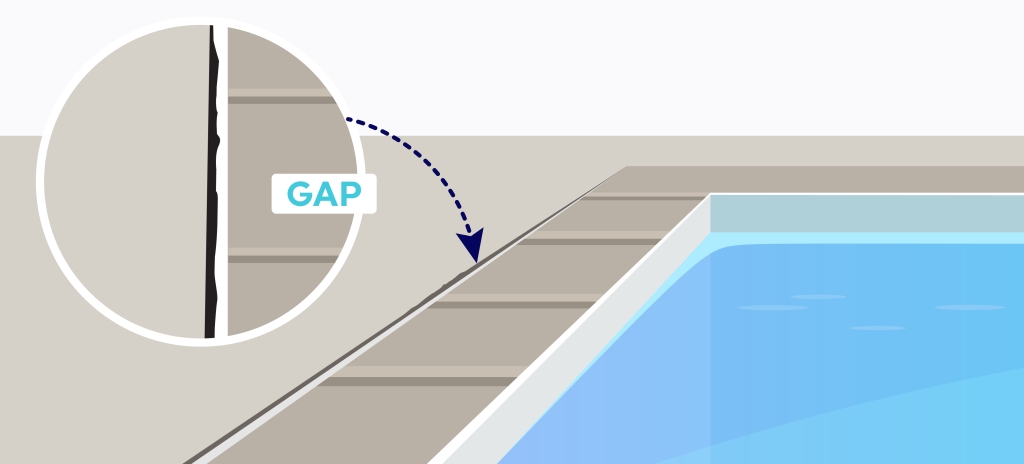
If the mastic is meant to seal the space between your pool deck and the coping to prevent water from entering, then it makes sense that if you notice any gaps or cracks there, then it’s something that needs to be looked into. Water getting through may be getting under the deck and causing the two sections to separate – and as with the cracking issue, this is something that could deteriorate fairly quickly so is worth making regular checks for.
The easiest way to keep an eye on the condition of your pool mastic is to take advantage of pool maintenance services from Pulliam Pools. Our knowledgeable maintenance crew don’t just keep your pool clean and your water healthy – they also cast an experienced eye over the general condition of your pool and its surroundings so that any developing issues can be identified and dealt with at the earliest opportunity.
Want to know more about how we can help keep your pool safe and healthy for you to use? Then get in touch with us now and ask about our weekly pool maintenance and other services.

